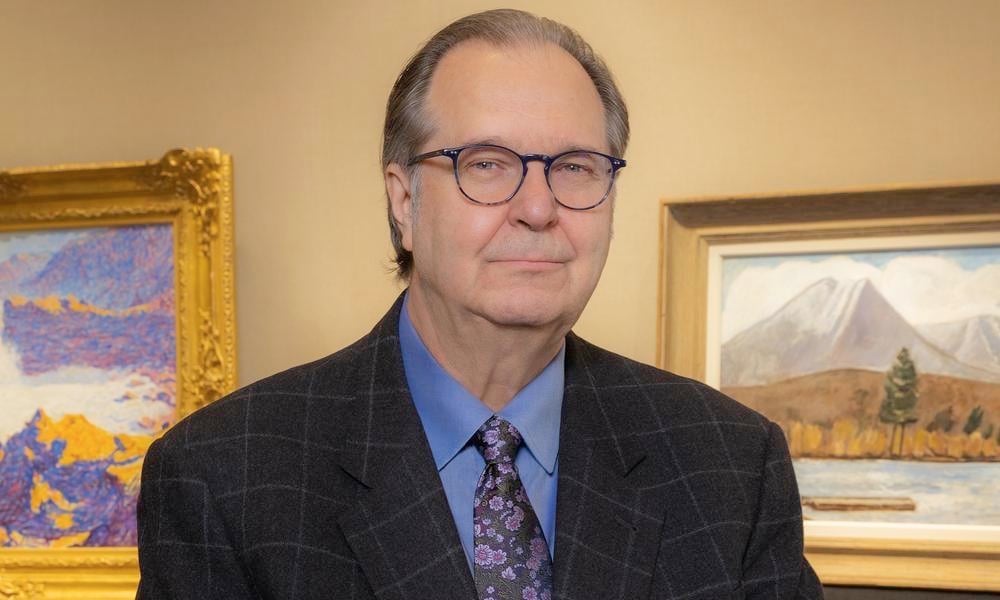People
John Driscoll, a Scholar of American Art Who Led New York’s Eminent Driscoll Babcock Gallery, Has Died at 70 From Coronavirus
Driscoll took over as owner of the gallery in 1987.

Driscoll took over as owner of the gallery in 1987.

Eileen Kinsella

Longtime gallery owner John Driscoll, a scholar, collector, and revered art dealer, died at age 70 on Friday, April 10, from complications related to COVID-19. The gallery he led, Driscoll Babcock, confirmed the news in a statement on its website.
“The family and staff of Driscoll Babcock Galleries mourn the loss of an inimitable scholar, gracious mentor, generous patron, and most importantly a great friend,” the gallery wrote. “His integrity, intelligence, kindness, humor, and dedication to art inspired all who knew him.”
Driscoll Babcock Galleries is one of America’s oldest; it was founded by John Snedecor in 1852, 18 years before the the Metropolitan Museum of Art. The business—known for showcasing titans of American art including Winslow Homer, Mary Cassatt, and Childe Hassam—got a new name when Driscoll took over as owner in 1987. Under his leadership, the gallery steadily reinvented itself, moving to Chelsea and adding more living artists and some international names into its program.
Still, the outfit kept its old-school vibe, always looking at contemporary art through the lens of history and maintaining a strong presence of classic American figures. “Someone once said going into Babcock was like going into a white-shoe law firm,” Driscoll told the Wall Street Journal in 2012. The gallery famously kept the same phone number it has had since 1956.
Before turning to the commercial world, Driscoll held appointments at the Palmer Museum of Art at Penn State University, the William H. Lane Foundation in Binghamton, the Worcester Art Museum, Yale University, and New York University. A keen collector himself, he acquired an eclectic selection of English, Japanese, and Danish art, as well as 20th-century ceramics.
“A giant has passed from the art world—a world that he loved so well, with an intensity and integrity rare to find,” artist Marylyn Dintenfass said in a statement shared with Artnet News.
Dintenfass noted that only a year ago, on accepting the inaugural service award from the Palmer Art Museum at Penn State, Driscoll had said: “I’m planning on being here a good while longer.” The artist said: “He had so much left to do, to discover, and to teach.”
He wrote extensively about American art and organized a number of shows at museums including the Los Angeles County Museum of Art, the Metropolitan Museum of Art, and the National Gallery of Art, in Washington, DC. Over the course of his career, Driscoll championed the work of artists including Marsden Hartley, Charles Sheeler, Edwin Dickinson, Don Nice, and Alan Gussow. He also helped facilitate acquisitions by such institutions as the Brooklyn Museum and the National Gallery.
In 2012, Driscoll moved his gallery to Chelsea from Midtown, inaugurating the 25th Street space with a well-received show, “This is How We Do It,” featuring works from 1763 to 2012. It included examples by 25 artists ranging from American art stalwarts John Singleton Copley, Thomas Eakins, and Stuart Davis, to Modern greats Franz Kline and Andy Warhol, to contemporary artists Dintenfass and Jenny Morgan.
At the time, Driscoll said: “Classic historical art always has currency in contemporary cultures and great contemporary art informs not only our own moment, but our perspective on classic art. When speaking of great works of art, classic equals contemporary, and contemporary equals classic.”